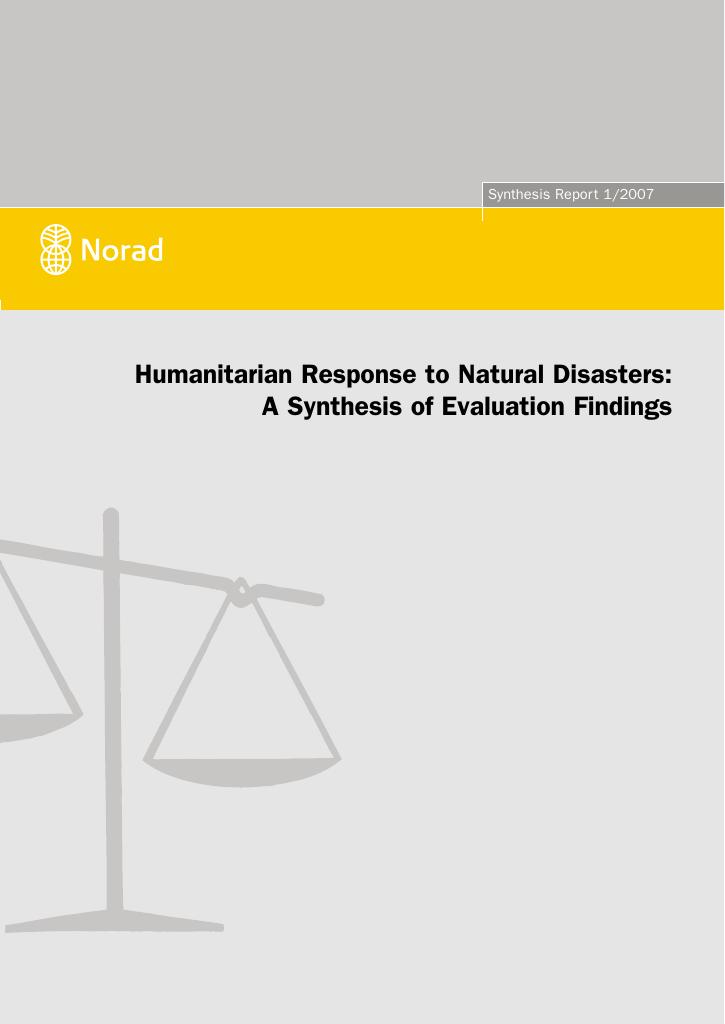Evaluering
Humanitarian Response to Natural Disasters : A Synthesis of Evaluation Findings
This report was commissioned by the Evaluation Department of Norad, which requested a synthesis report on the lessons learned in the field of humanitarian response to natural disasters. The report is intended to provide input to ongoing processes, including the preventive efforts of the Norwegian Ministry of Foreign Affairs, and to provide basic information for interested actors in the humanitarian sector. The scale of Western humanitarian response has grown significantly since the end of the Cold War. This growth has been followed by a rising number of evaluations of humanitarian operations and meta-analyses of the international humanitarian system. However, the evaluations and lessons learned have a tendency to remain fragmented and case-specific, despite their many similarities as regards both the themes that are emphasised in the evaluations and the weaknesses that are exposed in the humanitarian response. Evaluations of humanitarian response to natural disasters have many features in common. This applies primarily to the themes that are emphasised, but also to the lessons learned within these thematic areas. This report underscores five general themes in the available evaluationreports. In brief, they can be summarised as the need for and experience of: (1) linking of relief, recovery and development, (2) mapping and monitoring needs and target groups, (3) synergy between local, national and international capacities, (4) coordination of humanitarian actors and projects, and (5) disaster preparedness and vulnerability reduction. The findings of this report can be summarised in five points:• Firstly, it is consistently found that the divide between humanitarian disaster response and development cooperation continues to prevail despite increased emphasis on the need to link relief, recovery and development.• Secondly, there is strong focus on needs assessment as a prerequisite for effective, equitable humanitarian response, but it is also commonly observed that actual assessment practice shows substantial deviations from this norm.• Thirdly, it is a common experience that international humanitarian response undermines rather than bolsters local capacity, despite growing emphasis on the importance of local capacity in humanitarian response and long-term vulnerability reduction.• Fourthly, it is a recurrent theme in evaluation reports that there is a great and persistent need to find effective mechanisms for coordinating the multitude of actors in the humanitarian system.• Fifthly, the evaluation reports show that there is growing awareness of the need for disaster preparedness and vulnerability reduction, but there are relatively few examples of good practices. These evaluation findings show a clear need to reform the international humanitarian system to promote both synergies between international actors as coordinating facilitators and local vulnerability reduction and response capacity. The challenge for Norway as a donor lies not only in contributing to increased response capacity through improved funding and coordination,but also in helping to put in place strategies that focus on long-term vulnerability reduction and local response capacity. This indicates a need for selective choices of channels on the basis of three overarching objectives: (1) effective humanitarian relief, (2) rehabilitation, livelihood development and vulnerability reduction, and (3) coordination of relief, rehabilitation and livelihood development.
